“Space Train” Concept Could Get Humans To Mars In Two Days, If Only It Would Work

“Space Train” Concept Could Get Humans to Mars in Two Days, If Only It Would Work
More Posts from Curiositytherover and Others

How do electric guitars work? Learn more about the materials that make it possible with today’s graphic: http://wp.me/s4aPLT-guitar
![Magnified Universe [more]](https://64.media.tumblr.com/197c7ee2475a77605a8816687657e418/tumblr_nyjo97H9BI1s819puo1_500.png)
![Magnified Universe [more]](https://64.media.tumblr.com/84d8d8b852eae770892412d1cc8fe292/tumblr_nyjo97H9BI1s819puo2_500.png)
![Magnified Universe [more]](https://64.media.tumblr.com/0c4b9a665058e3836b60f622f1f0609a/tumblr_nyjo97H9BI1s819puo3_500.png)
![Magnified Universe [more]](https://64.media.tumblr.com/de0cd3dc514b3e64e3e88b9de9e0adc9/tumblr_nyjo97H9BI1s819puo4_500.png)
![Magnified Universe [more]](https://64.media.tumblr.com/100047dd8f124eeb1b3f3ee0b21524fc/tumblr_nyjo97H9BI1s819puo5_500.png)
![Magnified Universe [more]](https://64.media.tumblr.com/e69f4879cf17a7a81f7d2b4334aa3873/tumblr_nyjo97H9BI1s819puo6_500.png)
![Magnified Universe [more]](https://64.media.tumblr.com/ec3c6c7c24857c4e2219cf2676953232/tumblr_nyjo97H9BI1s819puo7_500.png)
![Magnified Universe [more]](https://64.media.tumblr.com/1513bc2928b65ad61b12c18ef82b191f/tumblr_nyjo97H9BI1s819puo8_500.png)
![Magnified Universe [more]](https://64.media.tumblr.com/82dd885da9ec482c369820a590febdce/tumblr_nyjo97H9BI1s819puo9_500.png)
![Magnified Universe [more]](https://64.media.tumblr.com/8bc1203743e917491c4989e5afd1fa3b/tumblr_nyjo97H9BI1s819puo10_500.png)
Magnified Universe [more]





Watch: Bill Nye calls out CNN for employing a climate change denier right on CNN
Follow @the-future-now
What’s Up for March 2016?
In March, Jupiter, it’s moons and moon shadows will all be visible in the sky. Find out when and where to look up:

Jupiter dominates the evening sky this month, rising at sunset and setting at dawn. On March 8, Jupiter reaches what is called “opposition”. Imagine that Jupiter and the sun are at opposite ends of a straight line, with the Earth in between. This brings Jupiter its closest to Earth, so it shines brighter and appears larger in telescopes.

On the nights of March 14 – 15, March 21 – 22 and March 29, two of Jupiter’s moons will cross the planet’s disk.

When the planet is at opposition and the sun shines on Jupiter’s moons, we can see the moon’s shadow crossing the planet. There are actually 11 of these double shadow transits in March!

The next six months will be awesome times for you to image Jupiter when it’s highest in the sky; near midnight now, and a little earlier each night through the late summer.
Even through the smallest telescopes or binoculars, you should be able to see the two prominent belts on each side of Jupiter’s equator made up of the four Galilean moons: Io, Europa Ganymede and Calisto. If you have a good enough view, you may even see Jupiter’s Red Spot!

Our Juno spacecraft will arrive at Jupiter on July 4th of this year and will go into orbit around the giant planet. Right now, the Juno mission science team is actively seeking amateur and professional images of the planet. These images are uploaded to a Juno website, and the public is invited to discuss points of interest in Jupiter’s atmosphere.

Locations will later be voted on and the favorites will be targets for JunoCam, the spacecraft’s imaging camera. Once JunoCam has taken the images, they’ll be posted online. Imaging participants can then process these raw mission images and re-upload them for others to view.

Make sure to follow us on Tumblr for your regular dose of space: http://nasa.tumblr.com
Can we talk about this?
So there’s this physics journal that uses math and science to discuss the realities of fictional universes in a super legit, peer-reviewed manner?
And they did a thing on Frozen?

Combining research on the film?

With info on how water works and stuff?

Then applied math and chemistry (and other things in which I am not especially well versed) to reach this conclusion:

So.











Reid Wiseman is a national treasure. There are 46 more of these.

Activist Kosta Grammatis puts Internet access high on the list of basic human needs. Information, he says, enables people in developing nations to teach themselves how to grow food, purify water, even create power sources. on their own. He explains why the Web is a gateway to satisfying all those needs—and more—in this Qualcomm Spark essay.
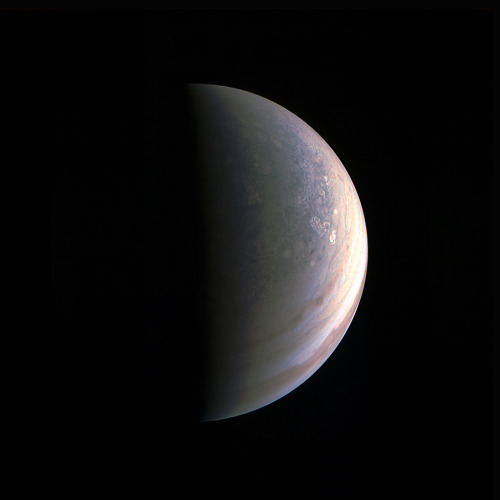
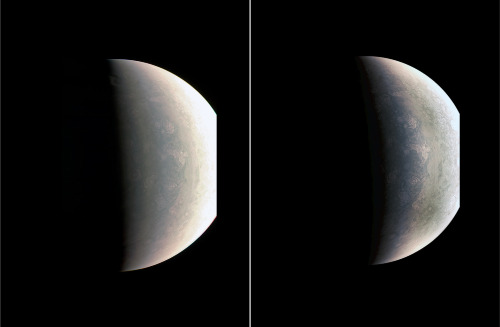
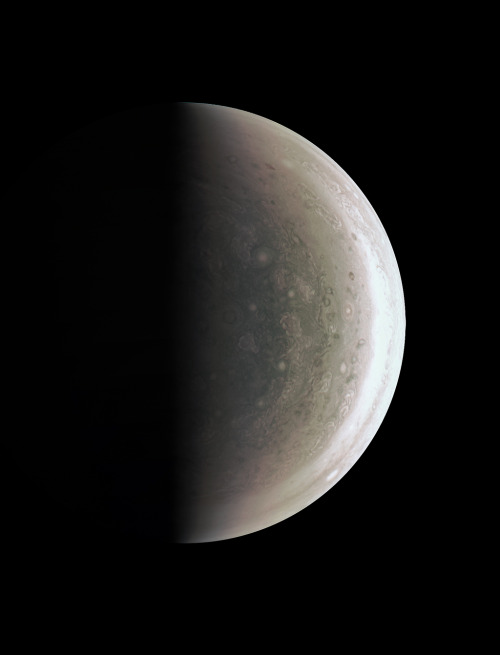
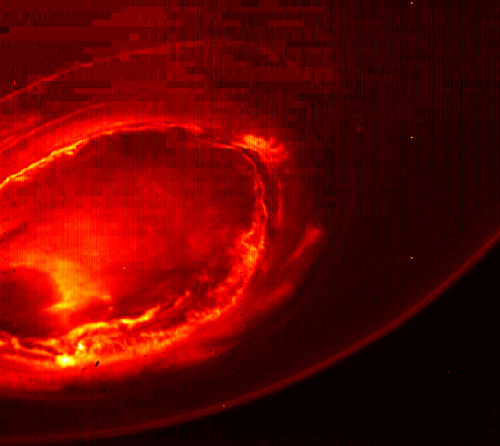
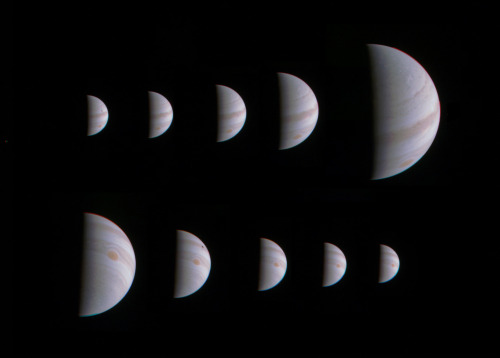
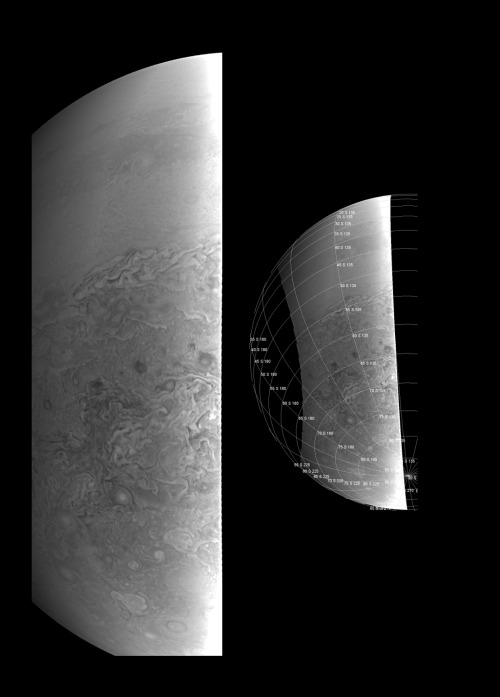
Jupiter’s North Pole Unlike Anything Encountered in Solar System
NASA’s Juno spacecraft has sent back the first-ever images of Jupiter’s north pole, taken during the spacecraft’s first flyby of the planet with its instruments switched on. The images show storm systems and weather activity unlike anything previously seen on any of our solar system’s gas-giant planets.
Juno successfully executed the first of 36 orbital flybys on Aug. 27 when the spacecraft came about 2,500 miles (4,200 kilometers) above Jupiter’s swirling clouds. The download of six megabytes of data collected during the six-hour transit, from above Jupiter’s north pole to below its south pole, took one-and-a-half days. While analysis of this first data collection is ongoing, some unique discoveries have already made themselves visible.
“First glimpse of Jupiter’s north pole, and it looks like nothing we have seen or imagined before,” said Scott Bolton, principal investigator of Juno from the Southwest Research Institute in San Antonio. “It’s bluer in color up there than other parts of the planet, and there are a lot of storms. There is no sign of the latitudinal bands or zone and belts that we are used to – this image is hardly recognizable as Jupiter. We’re seeing signs that the clouds have shadows, possibly indicating that the clouds are at a higher altitude than other features.”
One of the most notable findings of these first-ever pictures of Jupiter’s north and south poles is something that the JunoCam imager did not see.
“Saturn has a hexagon at the north pole,” said Bolton. “There is nothing on Jupiter that anywhere near resembles that. The largest planet in our solar system is truly unique. We have 36 more flybys to study just how unique it really is.”
Along with JunoCam snapping pictures during the flyby, all eight of Juno’s science instruments were energized and collecting data. The Jovian Infrared Auroral Mapper (JI-RAM), supplied by the Italian Space Agency, acquired some remarkable images of Jupiter at its north and south polar regions in infrared wavelengths.
“JIRAM is getting under Jupiter’s skin, giving us our first infrared close-ups of the planet,” said Alberto Adriani, JIRAM co-investigator from Istituto di Astrofisica e Planetologia Spaziali, Rome. “These first infrared views of Jupiter’s north and south poles are revealing warm and hot spots that have never been seen before. And while we knew that the first ever infrared views of Jupiter’s south pole could reveal the planet’s southern aurora, we were amazed to see it for the first time. No other instruments, both from Earth or space, have been able to see the southern aurora. Now, with JIRAM, we see that it appears to be very bright and well structured. The high level of detail in the images will tell us more about the aurora’s morphology and dynamics.”
Among the more unique data sets collected by Juno during its first scientific sweep by Jupiter was that acquired by the mission’s Radio/Plasma Wave Experiment (Waves), which recorded ghostly- sounding transmissions emanating from above the planet. These radio emissions from Jupiter have been known about since the 1950s but had never been analyzed from such a close vantage point.
“Jupiter is talking to us in a way only gas-giant worlds can,” said Bill Kurth, co-investigator for the Waves instrument from the University of Iowa, Iowa City. “Waves detected the signature emissions of the energetic particles that generate the massive auroras which encircle Jupiter’s north pole. These emissions are the strongest in the solar system. Now we are going to try to figure out where the electrons come from that are generating them.”
The Juno spacecraft launched on Aug. 5, 2011, from Cape Canaveral, Florida and arrived at Jupiter on July 4, 2016. JPL manages the Juno mission for the principal investigator, Scott Bolton, of Southwest Research Institute in San Antonio. Juno is part of NASA’s New Frontiers Program, which is managed at NASA’s Marshall Space Flight Center in Huntsville, Alabama, for NASA’s Science Mission Directorate. Lockheed Martin Space Systems, Denver, built the spacecraft. Caltech in Pasadena, California, manages JPL for NASA.
IMAGE 1….As NASA’s Juno spacecraft closed in on Jupiter for its Aug. 27, 2016 pass, its view grew sharper and fine details in the north polar region became increasingly visible. The JunoCam instrument obtained this view on August 27, about two hours before closest approach, when the spacecraft was 120,000 miles (195,000 kilometers) away from the giant planet (i.e., for Jupiter’s center). Unlike the equatorial region’s familiar structure of belts and zones, the poles are mottled with rotating storms of various sizes, similar to giant versions of terrestrial hurricanes. Jupiter’s poles have not been seen from this perspective since the Pioneer 11 spacecraft flew by the planet in 1974.
IMAGE 2….Storm systems and weather activity unlike anything encountered in the solar system are on view in these color images of Jupiter’s north polar region from NASA’s Juno spacecraft. Two versions of the image have been contrast-enhanced differently to bring out detail near the dark terminator and near the bright limb. The JunoCam instrument took the images to create this color view on August 27, when the spacecraft was about 48,000 miles (78,000 kilometers) above the polar cloud tops. A wavy boundary is visible halfway between the grayish region at left (closer to the pole and the nightside shadow) and the lighter-colored area on the right. The wavy appearance of the boundary represents a Rossby wave – a north-south meandering of a predominantly east-west flow in an atmospheric jet. This may be caused by a difference in temperature between air to the north and south of this boundary, as is often the case with such waves in Earth’s atmosphere. The polar region is filled with a variety of discrete atmospheric features. Some of these are ovals, but the larger and brighter features have a “pinwheel” shape reminiscent of the shape of terrestrial hurricanes. Tracking the motion and evolution of these features across multiple orbits will provide clues about the dynamics of the Jovian atmosphere. This image also provides the first example of cloud shadowing on Jupiter: near the top of the image, a high cloud feature is seen past the normal boundary between day and night, illuminated above the cloud deck below. While subtle color differences are visible in the image, some of these are likely the result of scattered light within the JunoCam optics. Work is ongoing to characterize these effects.
IMAGE 3….This image from NASA’s Juno spacecraft provides a never-before-seen perspective on Jupiter’s south pole. The JunoCam instrument acquired the view on August 27, 2016, when the spacecraft was about 58,700 miles (94,500 kilometers) above the polar region. At this point, the spacecraft was about an hour past its closest approach, and fine detail in the south polar region is clearly resolved. Unlike the equatorial region’s familiar structure of belts and zones, the poles are mottled by clockwise and counterclockwise rotating storms of various sizes, similar to giant versions of terrestrial hurricanes. The south pole has never been seen from this viewpoint, although the Cassini spacecraft was able to observe most of the polar region at highly oblique angles as it flew past Jupiter on its way to Saturn in 2000
IMAGE 4….This infrared image gives an unprecedented view of the southern aurora of Jupiter, as captured by NASA’s Juno spacecraft on August 27, 2016. The planet’s southern aurora can hardly be seen from Earth due to our home planet’s position in respect to Jupiter’s south pole. Juno’s unique polar orbit provides the first opportunity to observe this region of the gas-giant planet in detail. Juno’s Jovian Infrared Auroral Mapper (JIRAM) camera acquired the view at wavelengths ranging from 3.3 to 3.6 microns – the wavelengths of light emitted by excited hydrogen ions in the polar regions. The view is a mosaic of three images taken just minutes apart from each other, about four hours after the perijove pass while the spacecraft was moving away from Jupiter.
IMAGE 5….This montage of 10 JunoCam images shows Jupiter growing and shrinking in apparent size before and after NASA’s Juno spacecraft made its closest approach on August 27, 2016, at 12:50 UTC. The images are spaced about 10 hours apart, one Jupiter day, so the Great Red Spot is always in roughly the same place. The small black spots visible on the planet in some of the images are shadows of the large Galilean moons. The images in the top row were taken during the inbound leg of the orbit, beginning on August 25 at 13:15 UTC when Juno was 1.4 million miles (2.3 million kilometers) away from Jupiter, and continuing to August 27 at 04:45 UTC when the spacecraft was 430,000 miles (700,000 kilometers) away. The images in the bottom row were obtained during the outbound leg of the orbit. They begin on August 28 at 00:45 UTC when Juno was 750,000 miles (920,000 kilometers) away and continue to August 29 at 16:45 UTC when the spacecraft was 1.6 million miles (2.5 million kilometers) away.
IMAGE 6….This image provides a close-up view of Jupiter’s southern hemisphere, as seen by NASA’s Juno spacecraft on August 27, 2016. The JunoCam instrument captured this image with its red spectral filter when the spacecraft was about 23,600 miles (38,000 kilometers) above the cloud tops. The image covers an area from close to the south pole to 20 degrees south of the equator, centered on a longitude at about 140 degrees west. The transition between the banded structures near the equator and the more chaotic polar region (south of about 65 degrees south latitude) can be clearly seen. The smaller version at right of this image shows the same view with a latitude/longitude grid overlaid. This image has been processed to remove shading effects near the terminator – the dividing line between day and night – caused by Juno’s orbit.

Say ‘Hello’ to the Remote Controlled Gun-Wielding, Rocket Launching Vehicle
Where did the stars go?
One day, you find time to get out of the clutches of your work life and you decide to gaze at the stars.
Something which you used to do when you were a kid.
But the city life with all its glory has diverted you to other ‘fun’ things.

But to your amazement you find that the density of stars has drastically decreased.
‘That’s preposterous’- you say to yourself. That can’t be true.
You are positive that it has something to do with you aging.

You decide to go to your eye doctor and do a thorough check up. The doctor concludes that your eye sight is perfect.

You are delighted, knowing that your eye sight is perfect and that you are going to see those stars again. You spend all day lamenting about it.
You crave for the starry night sky. And you are sure it would look like so :

So, the following night you go to the terrace to rejoice at the sight. But yet see that the sky is not starry at all as you had marveled.
In fact, there is a stark difference between what you had in mind and what you observe.

You get increasingly concerned about it. You ask a few people around and you find out that the answer to this mysterious phenomenon is Light Pollution..
And you start to explore this new bizarre form of pollution.
What is Light Pollution?
Alteration of natural light levels in the outdoor environment owing to artificial light sources.
What does it do?
The impact of light pollution is to reduce our eye’s limiting magnitude. That means that we can see fewer and fewer stars.

The differences in the number of stars that can be seen due to varying levels of background light pollution.
Light pollution competes with starlight in the night sky for urban residents, interferes with astronomical observatories, and, like any other form of pollution, disrupts ecosystems and has adverse health effects.
Light pollution is a side effect of industrial civilization. Its sources include building exterior and interior lighting, advertising, commercial properties, offices, factories, streetlights, and illuminated sporting venues.
How can I prevent it?
(Light Pollution and How to Reduce It)
The solution does not involve curtailing nightlife, hampering the nighttime economy or compromising safety. It just requires directing lights where they’re needed and eliminating waste.
Here what you can do prevent light pollution.
1) Only turn on outdoor lights when needed—or install motion sensors.

2) Point the lights downward and outfit them with “shields” to prevent light from traveling sideways. The goal is to shine them only where illumination is wanted—not in people’s eyes or on other people’s property (a case of “light trespass”).

3) Lower the wattage of your bulbs and put them on dimmers. Bright lights and dark shadows don’t improve safety, but reduce it.

4) Close curtains at night to keep indoor light in. If you live in a multi-story building, use black-out curtains to prevent bird crashes.

And, of course, please use energy-efficient lights to cut global warming emissions even more than you’ll be doing already.
Inspiration :
Here’s what the night sky looks now, with light pollution.

And here’s how it will look like without it.

This post is to educate all the followers of the blog about Light Pollution, and raise awareness about it.
“Stars can’t shine without Darkness”
and hence i urge you to do your part to curbing Light Pollution.
Have a good day :)
PC: NASA, classroomclipart, Umut Siliman, eschooltoday,medscape
-
 aegeus-greekaegeansevresjuly1920 reblogged this · 8 years ago
aegeus-greekaegeansevresjuly1920 reblogged this · 8 years ago -
 kulaginasolomonida7015 liked this · 8 years ago
kulaginasolomonida7015 liked this · 8 years ago -
 deepthinkingandlifethoughts-blog liked this · 8 years ago
deepthinkingandlifethoughts-blog liked this · 8 years ago -
 foxyinaboxy liked this · 8 years ago
foxyinaboxy liked this · 8 years ago -
 curiositytherover reblogged this · 8 years ago
curiositytherover reblogged this · 8 years ago -
 pulsatingpeanut liked this · 8 years ago
pulsatingpeanut liked this · 8 years ago -
 introvertedandqueer liked this · 8 years ago
introvertedandqueer liked this · 8 years ago -
 runningideamachine liked this · 8 years ago
runningideamachine liked this · 8 years ago -
 t-tuff liked this · 8 years ago
t-tuff liked this · 8 years ago -
 artemiscephei reblogged this · 8 years ago
artemiscephei reblogged this · 8 years ago -
 artemiscephei liked this · 8 years ago
artemiscephei liked this · 8 years ago -
 pastel-papercut reblogged this · 8 years ago
pastel-papercut reblogged this · 8 years ago -
 azure-nesso liked this · 8 years ago
azure-nesso liked this · 8 years ago -
 ausevor reblogged this · 8 years ago
ausevor reblogged this · 8 years ago -
 ausevor liked this · 8 years ago
ausevor liked this · 8 years ago -
 stewarta17 liked this · 8 years ago
stewarta17 liked this · 8 years ago -
 greydlt liked this · 8 years ago
greydlt liked this · 8 years ago -
 xazrael reblogged this · 8 years ago
xazrael reblogged this · 8 years ago -
 xazrael liked this · 8 years ago
xazrael liked this · 8 years ago -
 adult-diversion reblogged this · 8 years ago
adult-diversion reblogged this · 8 years ago -
 theloganbrand reblogged this · 8 years ago
theloganbrand reblogged this · 8 years ago -
 theloganbrand liked this · 8 years ago
theloganbrand liked this · 8 years ago -
 realkatsunemiku liked this · 8 years ago
realkatsunemiku liked this · 8 years ago -
 yttriumrapier reblogged this · 8 years ago
yttriumrapier reblogged this · 8 years ago -
 yttriumrapier liked this · 8 years ago
yttriumrapier liked this · 8 years ago -
 lanxs reblogged this · 8 years ago
lanxs reblogged this · 8 years ago -
 kaeteol liked this · 8 years ago
kaeteol liked this · 8 years ago -
 3icecubes reblogged this · 8 years ago
3icecubes reblogged this · 8 years ago -
 lumberjackdaniel liked this · 8 years ago
lumberjackdaniel liked this · 8 years ago -
 andrexandrew reblogged this · 8 years ago
andrexandrew reblogged this · 8 years ago -
 vrows56 liked this · 8 years ago
vrows56 liked this · 8 years ago -
 vinyl-revolvers liked this · 8 years ago
vinyl-revolvers liked this · 8 years ago -
 lilybunne reblogged this · 8 years ago
lilybunne reblogged this · 8 years ago -
 miniminosh reblogged this · 8 years ago
miniminosh reblogged this · 8 years ago -
 miniminosh liked this · 8 years ago
miniminosh liked this · 8 years ago -
 thespecterstuff liked this · 8 years ago
thespecterstuff liked this · 8 years ago -
 shitsideblogdontfollow reblogged this · 8 years ago
shitsideblogdontfollow reblogged this · 8 years ago